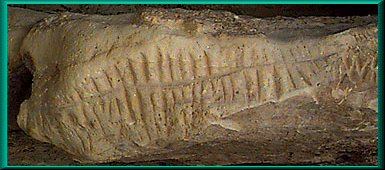
Baca County (population 4,121) was created by the Colorado legislature on April 16, 1889 out of the eastern portions of Las Animas County. The county was named for a member of the Baca family who had been the first settler of Two Buttes. This part of what would become Colorado had been home for many years to Native American Nations of the Plains. In the 19th century, pioneers making their way across the American West traversed the land, and as the 20th century dawned the area saw the development of farms and ranches.
Baca County has been mainly an agricultural area since its settlement in the 1800s. The main industries in Baca County remain farming and cattle production, along with some small-scale hog and feedlot producers. The economy has flourished and foundered with the rise and fall of agriculture in this rural area of Colorado. The Depression and the Dust Bowl both had a devastating impact on this area. In response to that disaster, Congress passed Public Law 46 in 1935, declaring soil and water conservation and wise land use a national policy. In an effort to stabilize the land, the federal government purchased large tracts that would become the Comanche National Grasslands, a landscape full of wildlife and historic resources that today forms the basis of Baca County’s ecological and heritage tourism.
Today, Baca County celebrates one interesting archaeological site in the Picture Canyon area of the Grasslands with semi-annual events known as the Spring and Fall Equinox Festivals in nearby Springfield. Picture Canyon features several locations with ancient Indian petroglyphs, including Crack Cave. The many petroglyphs decorating the walls of Crack Cave are thought to have been created during the 17th to early 19th centuries. Twice a year, at each equinox, the natural crack formation of the cave allows the sunrise light to illuminate specific petroglyphs in the cave. The United States Forest Service, which manages the land, allows public access and guides visitors to the cave only during the Spring and Fall Equinox. Participants hear Forest Service guides explain local Native American history and culture, and can pick up an interpretive CD guide to listen to while driving in the area. The festivals are promoted by the Springfield Chamber of Commerce and other sponsors. Since 2005, with the advent of the Southeast Colorado Birding Trail, the county has reinvigorated its efforts to expand the program and increase participation in the festivals.
Baca County has recently begun an assessment of historic properties throughout the county, and completed an inventory of 64 New Deal era resources in 2005. Dedicated local volunteers mobilized to raise matching funds for a Colorado Historical Society grant to repair the roof of the County Courthouse.
The county has partnered with five neighboring counties to form the Arkansas Valley Area Marketing Coalition, now known as the Southeast Colorado Regional Tourism Group, in order to develop as a regional heritage tourism destination. The Southeastern Plains have many historic assets telling the story of the evolution and development of America’s southwest. The Santa Fe Trail Scenic and Historic Byway ties together many of these sites.
Designated a Preserve America Community in April 2007.
For more information
Picture Canyon and Equinox Festivals
Santa Fe Trail Scenic and Historic Byway – The Mountain Branch